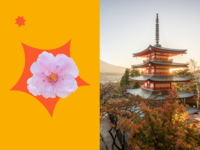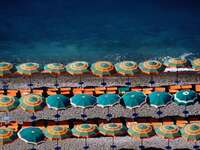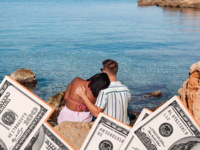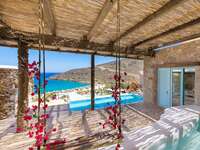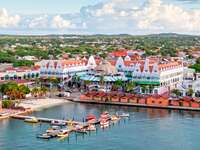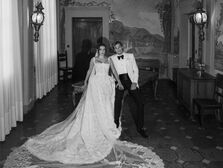The Complete Guide to a Bucolic Loire Valley Honeymoon
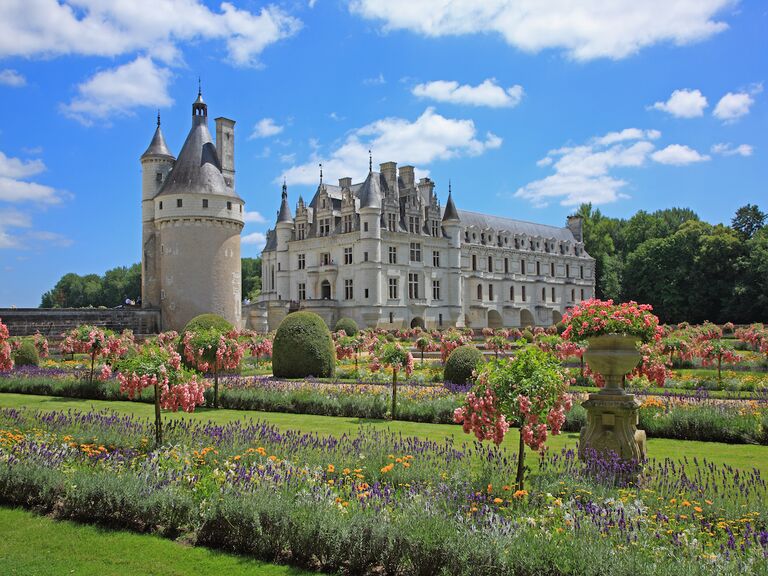
About an hour outside the buzz of Paris is the chateau-rich and rolling Loire Valley, the picturesque meadowland surrounding the mighty Loire River in central France. Loved by former resident Leonardo da Vinci and liberated from English occupation during the Middle Ages by Joan of Arc, this verdant valley is cherished for its fairy-tale castles, historic villages, charming locals, wine options, and world-class food scene.
If a Loire Valley honeymoon is your destination of choice, well done. Stroll with your partner through iconic chateaux, the former homes of French nobility, sip local wines, dine on five-star fare, and cycle through the countryside. Then, recharge at ultra-luxurious inns and many restored castles.
Is the Loire Valley Good for a Honeymoon?
Simply a one-hour train ride from Paris and featuring a backdrop straight out of a fairy tale, this region in central France is made for honeymoons. Spend a few days in Paris, then complete your getaway surrounded by forests, vineyards, castles, and the majestic Loire River.
The Pros of a Loire Valley Honeymoon
Along with its convenient location and picturesque scenery, this area is renowned for its creature comforts, including acclaimed restaurants, inns, and spas. Couples can truly feel like royalty as they taste award-winning wines at vineyards, visit Michelin-starred restaurants, and bliss out during indulgent spa treatments. Along with relaxing and focusing on each other, they can go biking, hot air-ballooning, and sight-seeing at the many famed chateaux and gardens plus charming medieval towns.
The Cons of a Loire Valley Honeymoon
"The main downside would be the seasonality," says Philip Haslett, Director, Kairos Travel, a travel agency focusing on France. "The temperate climate means that from late fall to early spring, the region can have complicated weather." Plus, travelers seeking out extreme adventure might want to look elsewhere, says Martha Good, Luxury Travel Advisor, Martha Good Luxury Travel.
The Best Times of Year to Go on a Loire Valley Honeymoon for Good Weather
Visit during May, June, or September, recommends Haslett. "July and August can be quite busy, as they are the European school vacations." Generally, shoulder seasons are safe bets and prices are most reasonable during fall, winter and spring. Finally, keep in mind that Bastille Day is a countrywide celebration on July 14 with the International Gardens Festival taking place throughout the summer in Chaumont-sur-Loire.
Things to Do During a Loire Valley Honeymoon
Visit Chateaux (Castles)
Designated as a UNESCO World Heritage Site, the Loire Valley is dotted with many lavish castles, once home to French aristocracy. Don't miss the most famed chateaux, including Chateau de Chambord, Chateau de Cheverny, and Chateau Royal d'Amboise. "Each one is a perfect setting for photos, and there is an incredible history behind each one," says Haslett.
Swoon Before the 'Sleeping Beauty' Castle
Three of the most romantic estates are the Chateau d'Usee, said to be the setting of the French fairy tale Sleeping Beauty, in the village of Rigny-Usse; the Chateau d'Azay-le-Rideau in charming Azay-le-Rideau; and the 16th-century Chateau de Chenonceau in Chenonceaux, a small village on the Cher River, one of the tributaries off the Loire. Straddling the Cher like a bridge, its intricate brocade-styled gardens, grand fireplaces, art collection, and ornate ceilings will have you swooning.
See Camille's Family Home from 'Emily in Paris'
On the popular Netflix series, Emily in Paris, Camille's family home (more like their sprawling and immaculate family castle) is located in the famed Champagne region of France. The series' production designer actually selected the Loire Valley region winery La Château de Sonnay, which traces its origins back to 1268, as it's owned by a friend. Check in advance to book tour options.
Explore the Dark History of Amboise
Amboise is home to the Chateau d'Amboise, a castle with beautiful grounds and a dark past. In 1560, one thousand Protestant "conspirators" were hanged here during the Wars of Religion. (The tiny chateau chapel houses Leonardo da Vinci's tomb.) For a serious spook, head west to Angers and the feudal Chateau d'Angers, built by St-Louis in 1238. Here you'll see the real deal: a dry moat, drawbridge, and 17 round towers along a 1-km-long exterior wall. Inside, a gallery displays an excellent tapestry collection, including the Apocalypse Tapestry, depicting gory scenes from the Book of Revelation.
Celebrate the Legacy of Leonardo da Vinci
Amboise is also home to Clos-Luce, a 15th-century manor house where Leonardo da Vinci last lived and died, and the Leonardo da Vinci Museum, with scale models of his inventions.
Hear the Joan of Arc Bell Chime Hourly
You'll find the Joan of Arc Museum in the clock tower of the 12th-century Chateau de Chinon, whose bell has chimed the hour since 1399, in the pretty town of Chinon near the Vienne River.
Stroll Through More Charming Towns
"The little villages, like Blois, Chinon, and Orléans, are rich with history and culture," says Good. She also recommends exploring Apremont-Sur-Allier, a quaint and walkable medieval village with "darling little shops," and Crissay-Sur-Manse, "known as one of the prettiest towns in France." Haslett suggests spending a day in the main city, Tours. During the day, check out the covered market, and later in the day, visit Place Plumereau, with its half-timbered houses, shops, restaurants, and bars.
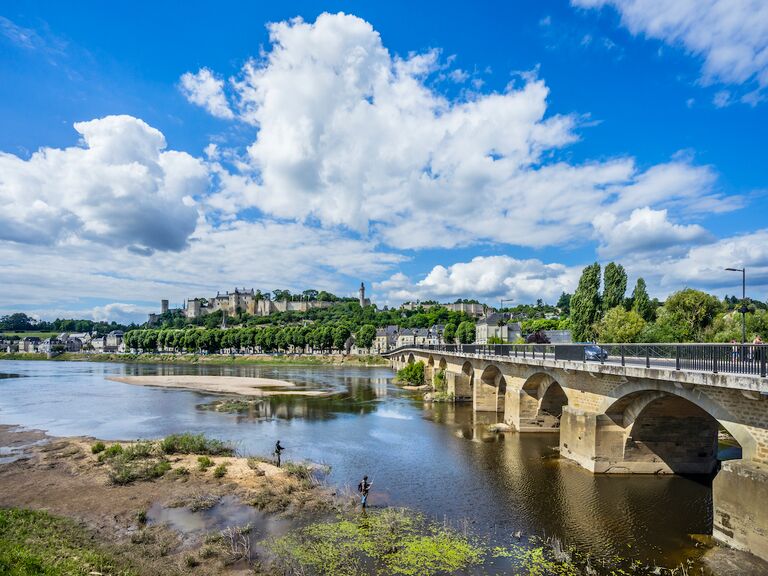
Tour the Cycling Path
"The cycling path that follows the Loire River (with a few detours) is a wonderful way to discover the region," says Haslett. Rent a bike and go from chateau to chateau, including Château Royal d'Amboise, Château du Clos Lucé, and Château de Chambord.
Enjoy Wine Tastings
"If you enjoy wine, you need to hit the wine trail," urges Sunil Metcalfe, Travel Expert, Black Tomato. The Loire Valley is most famous for its white Sancerre wines, made with Sauvignon Blanc grapes.
Best Hotels and Resorts in the Loire Valley for a Honeymoon
Les Sources de Cheverney, Cheverney
Set amidst 110 acres of woodlands, this retreat features 49 rooms and suites, furnished with antiques. Guests can visit the spa and wine bar, offering pours including its home-grown vin.
Domaine de la Tortinière, Veigne
Melcalfe recommends this family-owned property, with a "dream-like chateau" and expert food featuring local ingredients. Amenities include a tennis court, heated pool, billiard room, massage room, and sauna.
Château Louise de La Vallière, Reugny
This new five-star boutique hotel, part of the Relais & Chateaux collection, boasts a restored 16th-century chateau, spa, restaurant, and 47-acre park with roses and majestic trees. Thanks to period furnishings and cuisine, guests feel like they're royalty in another time.
Fleur de Loire, Blois
With a restaurant and bistro run by a two-Michelin-starred chef, this new luxury hotel includes a 17th-century building, pool, spa, and herb and vegetable garden.
Chateau du Rivau, Lémeré
With seven guest rooms, this intimate spot stars a 14th-century castle with a drawbridge and moat, surrounded by an extensive rose garden.
Les Hauts de Loire, Onzain
Located near the town of Blois, this Relais & Chateaux property encompasses a 19th century hunting lodge, lakes, fitness center and pool, spa, one Michelin-starred restaurant, and bistro.
Manoir Saint-Thomas, Amboise
With a Renaissance façade, fireplaces, and grand staircase, this charming spot is within walking distance of the old town center. Guests can choose from 10 rooms and relax in the heated pool.
What to Pack for a Loire Valley Honeymoon
Bring comfortable walking shoes, counsels Good. She also suggests packing with the aim of wearing layers of clothing, for cooler mornings and warmer afternoons in the spring and fall. Stylish honeymooners will want to pack outfits for castle outings and local town exploration. Pending weather conditions, they'll want to throw in sundresses, button-down shirts, linens and sunglasses. Don't forget a cute sun hat if you want to shield yourself as you'll be spending some time outdoors.
–Lori Seto contributed to this article.



